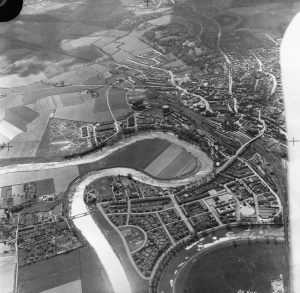Stirling’s strategic importance has long been linked to the River Forth.
The crossing point here has been a key place for travelling North and South for hundreds, if not thousands, of years. But did you know about the our building’s link to Stirling’s seafaring past?
Stirling’s Past as a Port
Travelling to Stirling by boat has probably been common for thousands of years. In 1874, a logboat was found in the Forth at Cambuskenneth which has been dated to the late 10th century. It’s stored at Cambuskenneth Abbey.
Scottish charters from the medieval period mention a harbour at Stirling, and burgh (town) records reference the harbour over a considerable period of time. Cambuskenneth Abbey is known to have had a medieval harbour, and archaeological excavations took place there in 2015. The results of these excavations suggested that the level of the river used to be significantly higher than it is today.
From 1450 onwards, Stirling was well established as an important Scottish port. It continued to be a trading port well into the 20th century. In the 1920s and 1930s, small transport ships continued to make the awkward, winding voyage up the Forth, but waterborne trade in Stirling really died out with the start of the Second World War in 1939.

Aerial photograph of the River Forth and the surrounding landscape of Stirlingshire.
The Engine Shed and Seagoing Trade
There’s an historical link between Stirling’s industries and the river Forth. Up until the 1850s, shipbuilding took place on the river’s banks, and raw materials like coal and lime were brought to Stirling by boat and goods like seeds exported. Some of this industrial activity was related to the military base at Forthside in the transportation of ordnance using the river.
Our building was once part of this military complex, and there has been a quay (a platform for loading and unloading ships) on the riverbank near the Engine Shed since at least 1740. Later, another quay was built slightly north of this. It was used by the military to transport equipment and goods – the greenheart timber used to construct it is still visible from the river bank walk.
Today though, the river is no longer used by trading ships, and very few people would think of Stirling as a port city. Large ships would find it difficult to navigate the Forth as far up as the Engine Shed, and the availability of fast, easy road and rail transport probably contributed to the port’s decline in the 19th and 20th centuries.




